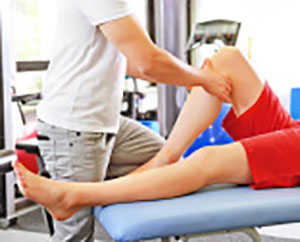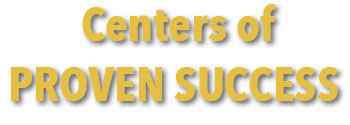Knee Pain & ACL Injury
 Knee pain and knee injuries are fairly common, and can affect nearly anyone whether you are highly active or fairly sedentary. There are many potential causes for knee pain, and physical therapy may be the best treatment option for you.
Knee pain and knee injuries are fairly common, and can affect nearly anyone whether you are highly active or fairly sedentary. There are many potential causes for knee pain, and physical therapy may be the best treatment option for you.
If you suffer from…
• Pain in the front of your knee especially when climbing stairs
• Pain in the front of your knee while sitting
• Pain and stiffness in the morning
• Pain on the inside of your knee
• Pain on the outside of your knee
• Pain in the back of your knee
• Weakness and reduced range of motion
• The feeling that your knee is going to give out
You may have one of the following knee conditions:
Knee osteoarthritis: This condition is a common problem for many elderly and middle-aged people. Knee osteoarthritis occurs when the cartilage on the end of each bone wears away. As the cartilage deteriorates, the bones rub together, causing pain and inflammation. Bone spurs may develop which can also limit how far the knee can move. The pain and stiffness are worse in the morning and after prolonged standing or walking.
Patellafemoral Problems: The patella (knee cap) is the moveable bone on the front of the knee that is covered with cartilage on the underside. Problems develop when the patella suffers wear and tear and the underlying cartilage begins to deteriorate. This degeneration can be a function of aging, or in many cases due to a weakness or imbalance of the quadriceps muscles.
Illiotibial Band Syndrome: The ITB is a long tendon that runs down the side of the thigh and connects to the outside of the knee. The ITB glides back and forth over the knee as it bends and straightens. Sometimes this tendon can become inflamed as a result of too much activity. The pain is localized to the outside of the knee and occasionally radiates down the outside of the shin. People with weak hip muscles and over pronation are more likely to develop this condition.
Meniscal Tears: There are two menisci between your shin (tibia) and thigh bone (femur). These two menisci act like shock absorbers in the knee. They help spread out the forces that are transmitted across the joint. In younger people, the meniscus is fairly tough and rubbery. Tears usually occur as a result of a forceful twisting injury. The menisci weakens with age, and many older people can suffer from a tear as a result of normal activity such as the up-and-down motion of squatting. The pain is localized to either side of the knee depending on which meniscus is torn.
Anterior Cruciate Ligament (ACL) tear: This is one of the most common knee injuries, and is nearly always associated with a traumatic event. Treatment often requires surgical intervention followed by physical therapy to ensure proper rehabilitation and a return to normal activities.
Patella Tendinitis: Patellar tendinitis is an overuse injury that affects the tendon connecting your kneecap (patella) to your shinbone (tibia). The patellar tendon plays a pivotal role in the way you use your legs. It helps your muscles extend your lower leg so you can kick a ball, climb stairs, run, push the pedals on your bicycle and jump up in the air. Patellar tendinitis occurs when you place repeated stress on your patellar tendon, often when you suddenly increase the intensity or frequency of your workouts. Stress causes tiny tears in the tendon, which your body attempts to repair. But as the tears in the tendon become more numerous, your body can’t keep up, causing the inflammation in your tendon to worsen. Pain may be infrequent at first, but with continued stress and damage to the patellar tendon, the pain of patellar tendinitis can become a constant ache.
Osgood Schlatter’s Disease (OSD): This condition is one of the most common causes of knee pain in adolescents. The good news is that this is not really a disease, but an overuse injury. It is an inflammation of the bone, cartilage, and/or tendon at the top of the shinbone (tibia), where the tendon from the kneecap (patella) attaches. Most often only one knee is affected. OSD usually strikes active adolescents around the beginning of their growth spurts, the approximately 2-year period during which they grow most rapidly. Growth spurts can begin any time between the ages of 8 and 13 for girls, or 10 and 15 for boys. OSD has been more common in boys, but as more girls participate in sports, this pattern is changing. Teens increase their risk for OSD if they play sports involving running, twisting, and jumping, such as basketball, football, volleyball, soccer, tennis, figure skating, and gymnastics.
Your key advantage is our 100% focused, one-on-one care
We are committed to giving 100% of our expertise and effort to every knee injury patient at all times. This means that your dedicated physical therapist works one-on-one with you through every minute of every rehab session – providing expert assessment and guidance, and constant encouragement and support.
In other rehab facilities, you may not always work with the same physical therapist, or you may work with a PT assistant instead. And often, your therapist may work with several other patients at the same time. These factors can make it difficult to get the level of care you need to achieve a full and fast recovery.
That’s why our rehab care is always provided ONE therapist to ONE patient. ONE at a time. EVERY TIME. It’s the ProFitness AdvantageSM. And it’s what helps us achieve such excellent results.
For more information on knee pain, download this brochure.
“Knee replacement surgery left me with weakened thigh muscles. ProFitness provided me with a treatment program and restored my mobility. With guidance from my caring therapist, I enjoy a weekly workout that has improved my walking, muscle tone, and according to my family — my disposition.” – N.H., Manhattan, NY (87 years young)


